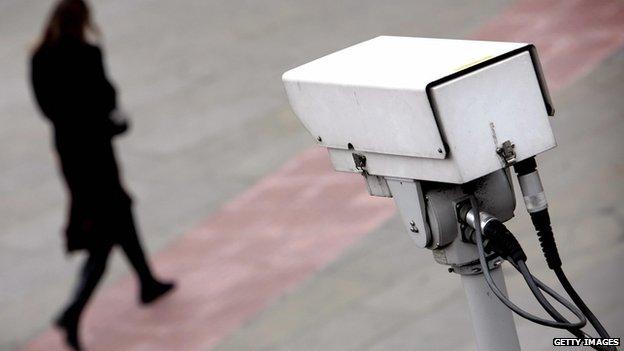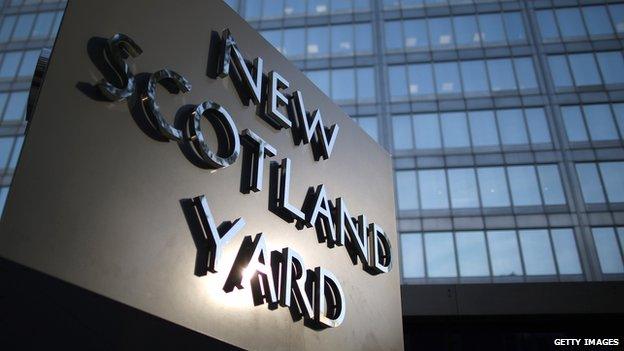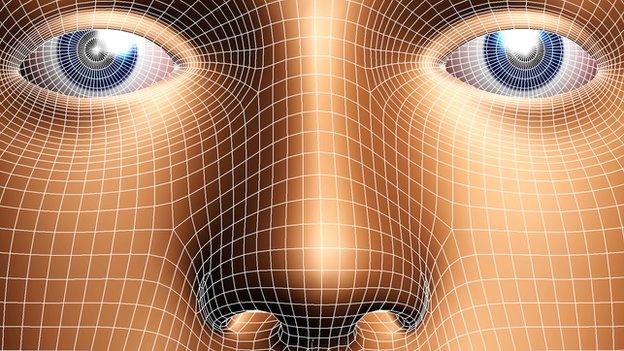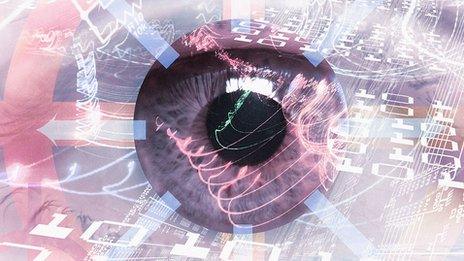Facial recognition technology: How well does it work?
- Published

The police database includes images from CCTV, as well as mugshots taken by the police
The revelation that police are holding a database of around 18 million mugshots has provoked an examination of the balance between civil liberties and catching criminals. But how effective is the technology?
Not as good as many people think, according to the Metropolitan Police officer in charge of the force's central forensic image team.
The system used by the force works by taking measurements between various points on people's faces in order to build up a picture of what they look like.
That is then matched against two databases - one holding mugshots taken of people who have been arrested and the other containing images from outside sources, such as CCTV.
'Super recognisers'
The main problem, Det Ch Insp Mick Neville told the BBC, is that most images are not of a good enough quality to produce any sort of match.
"With the vast majority of CCTV images, it will not work - in 18 months, we have had fewer than 10 hits."
That did not compare well against human performance. Mr Neville said he recently brought 90 "super recognisers" - people who are particularly adept at facial recognition - to Scotland Yard. "We had the best part of 300 IDs over three evenings," he said.
He added that, of the 4,000 images loaded on to the database following the 2011 London riots, only one has actually been matched to a person.
He was speaking after BBC Newsnight reported that many of the people whose images were being held by the police were innocent.

The Metropolitan Police have stopped putting new images on the database until the relevant laws are clarified
The system has a particular problem with CCTV images, he said. That is because they are rarely clear enough to give any chance of a match.
"At the airport, if you go to the facial recognition machine, you want it to work, so you are looking dead at the camera. It is a good angle, the lighting is right, the picture has been shot against the right background. And yet it only works 90% of the time."
No control
Mr Neville said that, while the police would be heavily scrutinised, some image recognition technology on the consumer market was as powerful as that used by the force, such as Picasa and Facebook.
The technology splits into two fields, according to Dr Tim Heseltine of Aurora Computer Services, which has supplied police forces in the past.
The BBC's Nick Hopkins: "We are on the cusp of a revolution in biometric technology"
He said the most effective were complete systems that included hardware and captured images themselves. Less effective, he said, were the software-only systems, which relied on the quality of the images fed into them.
Because of the nature of police work, the former are rarely of any use to police, who often have no control over the quality of CCTV images given to them.
Given a high quality image, however, they could use skin texture analysis to find a match.
Heated debate
In recent years, the technology has moved on from measuring distances on people's faces, which can be relatively inaccurate, to analysing each pixel to look for correlations to typical facial structures.
The latest revelations are not the first to provoke a heated debate on the use of facial recognition technology. In November 2013, Tesco began using screens that could read customers' faces and target ads at them.
And, in 2012, Facebook suspended its facial-recognition tool that suggested tags for images to bring it into line with European regulations. It said at the time, that it intended to reinstate the feature in the future, however.
- Published3 February 2015

- Published21 September 2012

- Published4 November 2013
